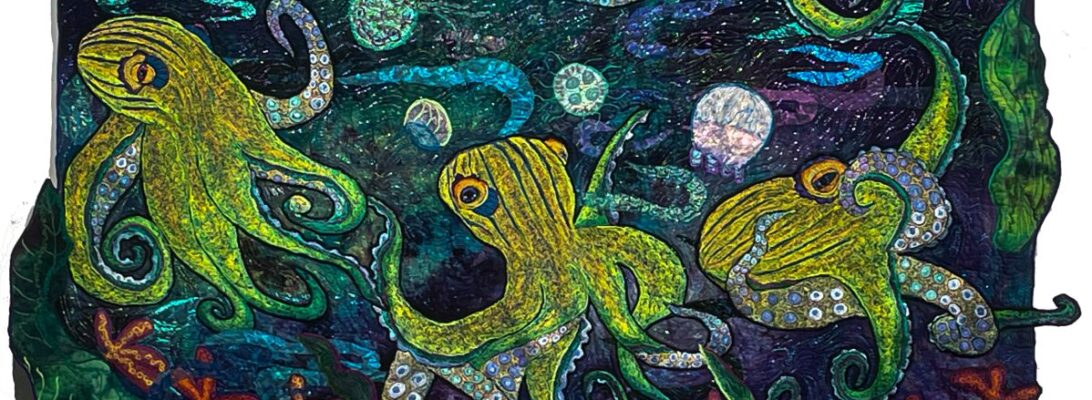
Component quilting lets me streamline my quilting. I have two quilts I’m working on that will need some bugs. Why?

Both of these pieces are going to need some help building a pathway. Bugs are a great way to do that. They flitter across the surface and they create movement. But these need a significant number of bugs. It’s just easier to make a batch. I think ended up making 35 in all.

I did damsel flies, moths, and small white butterflies for the frog/turtle quilt.


For the bluebird quilt, I wanted larger white butterflies.

This batch of bugs was a color lesson for me. Normally I ignore gold and silver thread. When there’s purple and green metallic thread, why would I use gold or silver.
All of the bug bodies are from Madeira FS2/20 thread. The black core thread really looks like beading up close.
I tried the opalescent white as a butterfly wing. I was underwhelmed. I really don’t like the pink quality.

I needed the white that silver brings. I tried going over it with silver afterwards. It was not improved.

Opalescent white under silver does a nice bright white. For those birds, nothing else will do.

I wanted a softer quality for the moths and the swamp. So they were done from polyester threads.

For the damselle flies I needed a solid carapace and see-through wings. The iridescent thread did the wings nicely, even with the pink cast.
Different threads offer really big differences in the result. In this case, it keeps the bugs separate from each other and from the other elements in the quilt.
Size is a limit with component quilting. Things under an inch and a half are hard to keep crisp and have too heavy an outline when they’re applied. But for most elements, it allows me to choose where to put what. Choice is good.












